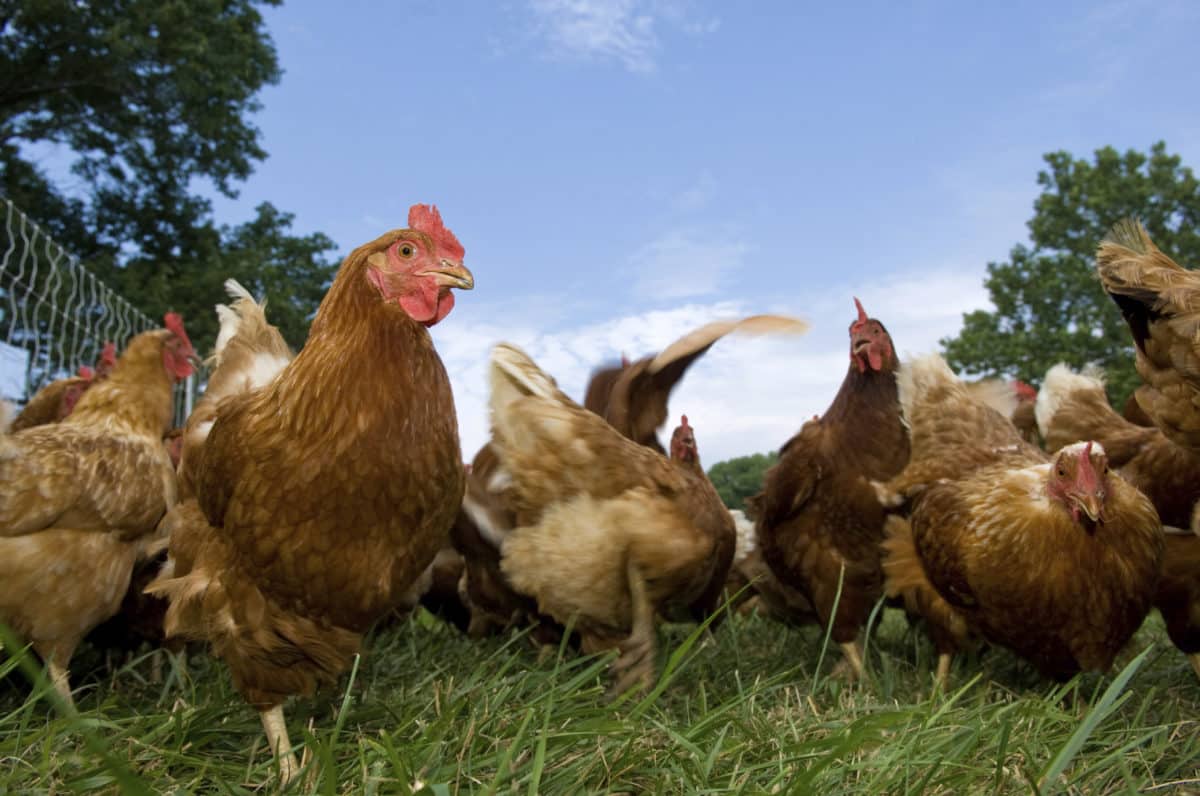Chickens are beautiful, funny, smart, and talented creatures. They can also be flighty, sometimes quite dumb, and difficult to treat for their health-care emergencies. But that didn’t deter my husband and me from buying our first three tiny, fluffy brown chicks at our local feed-and-seed store, bringing them home in a plastic tub. We got them started with a simple set-up of some pine shavings, a yogurt container of water, its lid filled with chick starter, and a heat lamp precariously perched on a bar stool. Thinking that our loving and gentle black lab might bond with the babies and play mother hen – and that it would make an adorable YouTube video — we introduced the dog to one of the chicks. Instead of bonding with it, she mistook it for a squeaky toy. And so our education began.
In keeping any type of animal as livestock or as a companion, there is frustration, sadness, joy, and hilarity. We quickly discovered the threat of predators, including local pets. We have had more chickens snatched by our neighbors’ dogs than by foxes or coyotes. Chicken wire looks more effective than it really is, and we learned that really aggressive dogs will work their way through just about anything. I’ll admit that we named our first three chickens, but now I wouldn’t recommend it; it really does make the inevitable losses a little easier when the birds aren’t named.
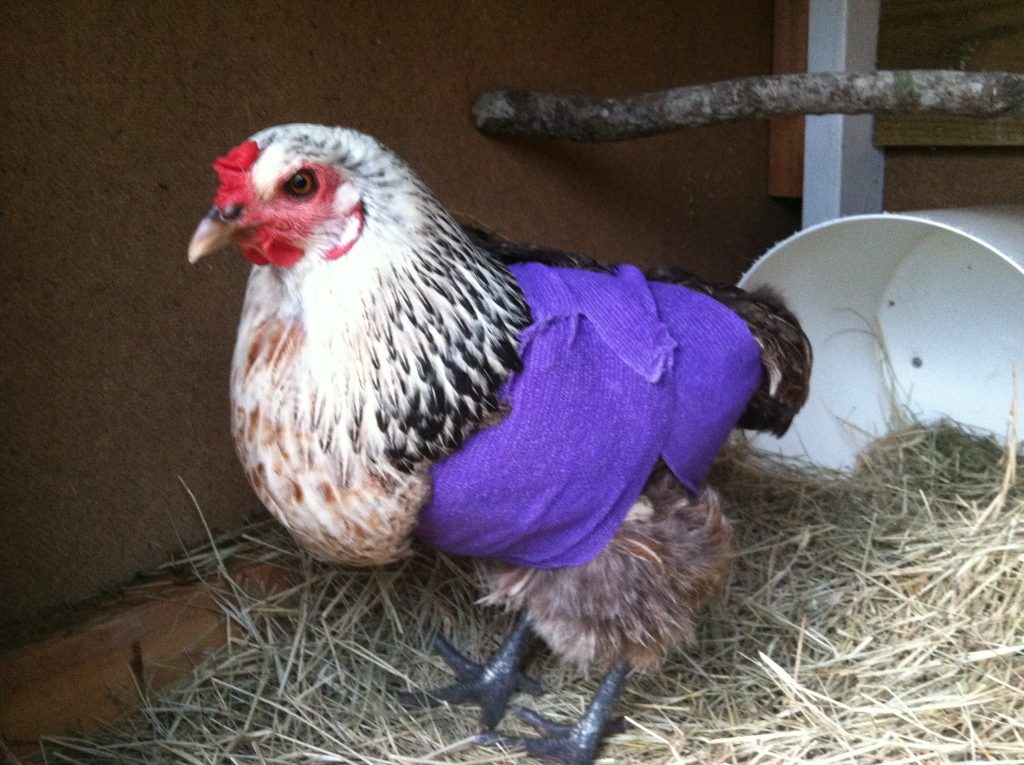
It hasn’t been all bad, though. Even after one of our hens was attacked by a dog, she was stoic and funny, letting us attend to her damaged wing and wrap her entire body in a purple ace bandage. She remained calm and resolute throughout the ordeal, and delighted all of us by waddling a purple streak across the yard when we tossed her favorite tidbits, carrot peels and celery tops.
One hen became my constant companion and would even follow me halfway down our long driveway whenever I set out for my morning run. Our cats learned to fear and respect the chickens; they learned from experience that perching on the cover of the coop was fine until a paw dangled over the edge came too close to a waiting chicken’s beak.
A neighborhood black snake became something of a nuisance when he was discovered late one evening by my husband, who, using only his cell phone for light, had come out to do an egg check. Draped languorously across the roosting branches and sporting several suspicious lumps, Mr. Snake was relocated to the woods, only to reappear again several times more. Unfortunately for him, we have a three-strike rule at our house.
The occasional necessity of having to catch a chicken is bound to lead to hilarity, on the part of the chickens themselves (who seem to enjoy the excitement) as well as any bystanders. It is good and thorough exercise for everyone involved.
So, what does a novice chicken rancher need to know? To answer the most common question we get, you do not need a rooster for chickens to lay eggs. Roosters are needed if you want to raise baby chicks from eggs, but otherwise can be something of a nuisance and have been known to chase children — and grown men — around the yard.
Secondly, chickens do not have an offensive odor. They are clean, fastidious about ‘bathing,’ and, as long as you periodically clean their coop out, make very little mess. Chickens take dirt baths, dusting themselves by flopping around in what may appear to a fit of some sort or a kind of writhing that looks like it’s preceding their death by only seconds. But they aren’t dying, they’re dust bathing; it’s their way of staying clean.
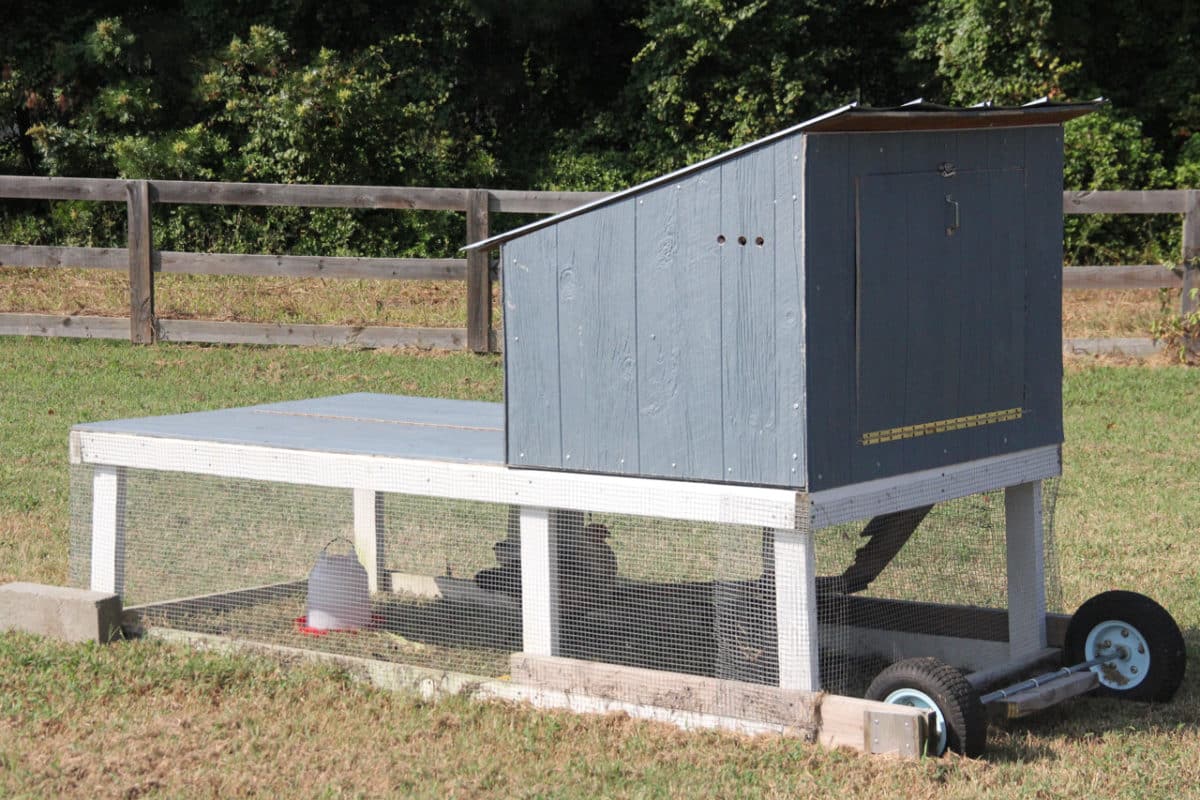
Last, chickens don’t need very much room to be happy and productive egg layers. We are now on the fourth generation of our original “chicken tractor,” which takes up a simple four-by-eight footprint. Inspired by a design by the noted chicken farmer Joel Salatin, we attached wheels to it so that we could move it around the pasture. What we have found, however, is that we don’t need to move it often. The chickens simply need a secure place to come home to roost. An enclosed box attached to the top of the tractor is their laying box, with a door for us to have access to the eggs. There are many do-it-yourself designs for chicken accommodations available on the Internet, and pre-built pens in various styles and sizes can also be found online or in stores. Williams-Sonoma has beautiful ones that I covet, but I’ve seen spectacular ones built by local craftsmen, too.
If you’re planning to raise chickens from infancy, it’s important to have a source of heat in their pen. We use a heat lamp with a red bulb, and have learned how to adjust its height and proximity to the chicks according to where they position themselves in relation to it. If they are huddling together underneath it, we point it at them more directly. If they are as far away as they can get, we point it away from them. Careful observation of what the chickens are doing will likely tell you much of what you need to know.
So, why keep chickens? Here’s a list of our reasons: They look funny when they run. We enjoy having a sustainable, natural, and ethical source of eggs. Kids have a blast finding the eggs — and so do the adults, for that matter. Chickens’ personalities are as different as their feathers. And they are living composters of kitchen scraps, eating just about anything you can throw at them.
Like all living things, chickens need access to clean water, shelter, and food of some type. The subject of what chickens should or should not eat is a matter of heated debate. We have found that our chickens seem to be able to discern for themselves what they should ingest. The most common “no-nos” I’ve heard are citrus, avocado, and onion; however, ours happily eat onion and we’ve never detected an off-taste in the eggs.
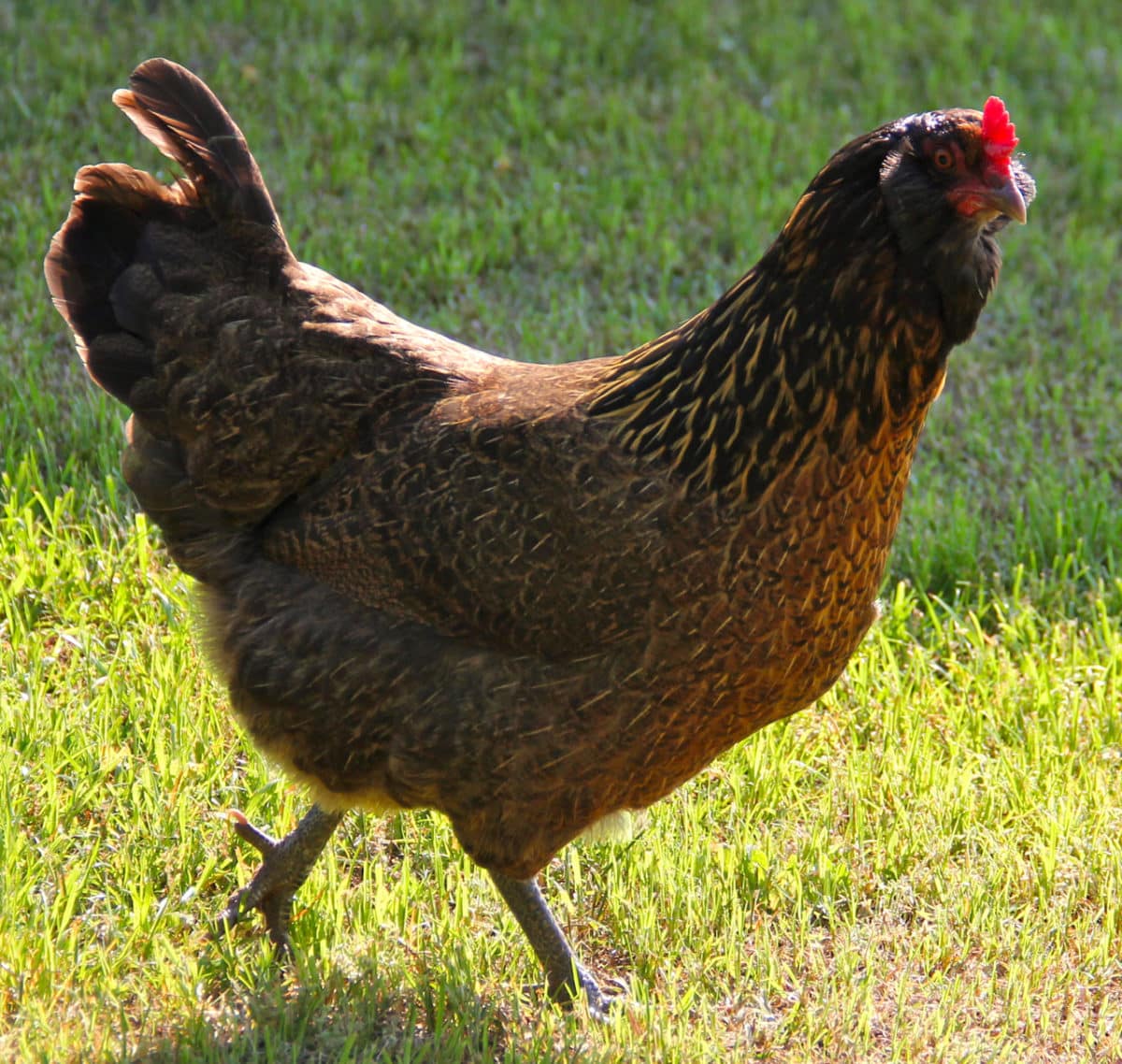
Chickens benefit from nutritional supplements in “layer” crumbles or pellets, which can be purchased in garden centers and feed stores. They need sand or gravel to crush food in their gizzards and will pick it up from the ground if allowed to roam or given a large enough run. Crushed egg shells or oyster shells added to their feed will provide extra calcium for egg production.
It is worth noting that if chickens will eat table scraps, they’ll also devour a garden. It took us a while to discover why we weren’t getting any ripe tomatoes last summer. It’s also wise to keep them out of any landscaping, unless you find filling holes to be somewhat meditative.
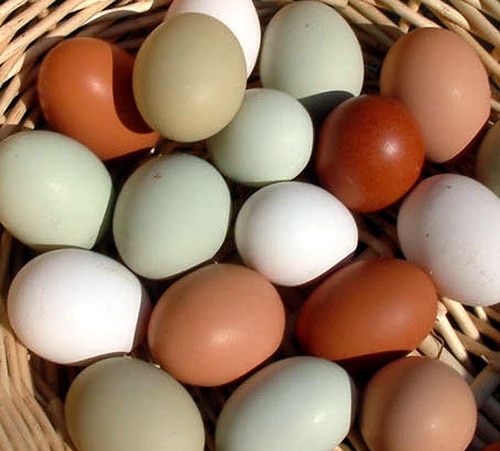
Our current chickens are called ‘Easter Eggers’ because of the blue and green eggs that they lay. While the eggs are beautiful, we did notice that they slacked off laying this winter, whereas other chickens we’ve had have been steady and consistent layers. We suggest getting a variety of chickens — it makes for a beautiful arrangement when you have a mix of blue, green, brown and white eggs, and you’ll likely be able to have eggs throughout the year. We picked several breeds we wanted, then asked our feed store to order them from a mail-order supplier and to notify us when the chicks arrived. The possibilities seem almost limitless when it comes to choosing what type of chicken you want, but it’s always a good idea to read up on the breeds. Some popular breeds are Easter Eggers, Barred Rocks, and Rhode Island Reds.
Most states have an agriculture extension office or something similar online, which can be a useful resource for learning about breeds and how to raise them. The internet is teeming with information, and an online search usually yields several great forums centered around keeping backyard chickens. Two of my favorites are http://www.backyardchickens.com/ and http://www.sagehenfarmlodi.com/chooks/chooks.html. ![]()
